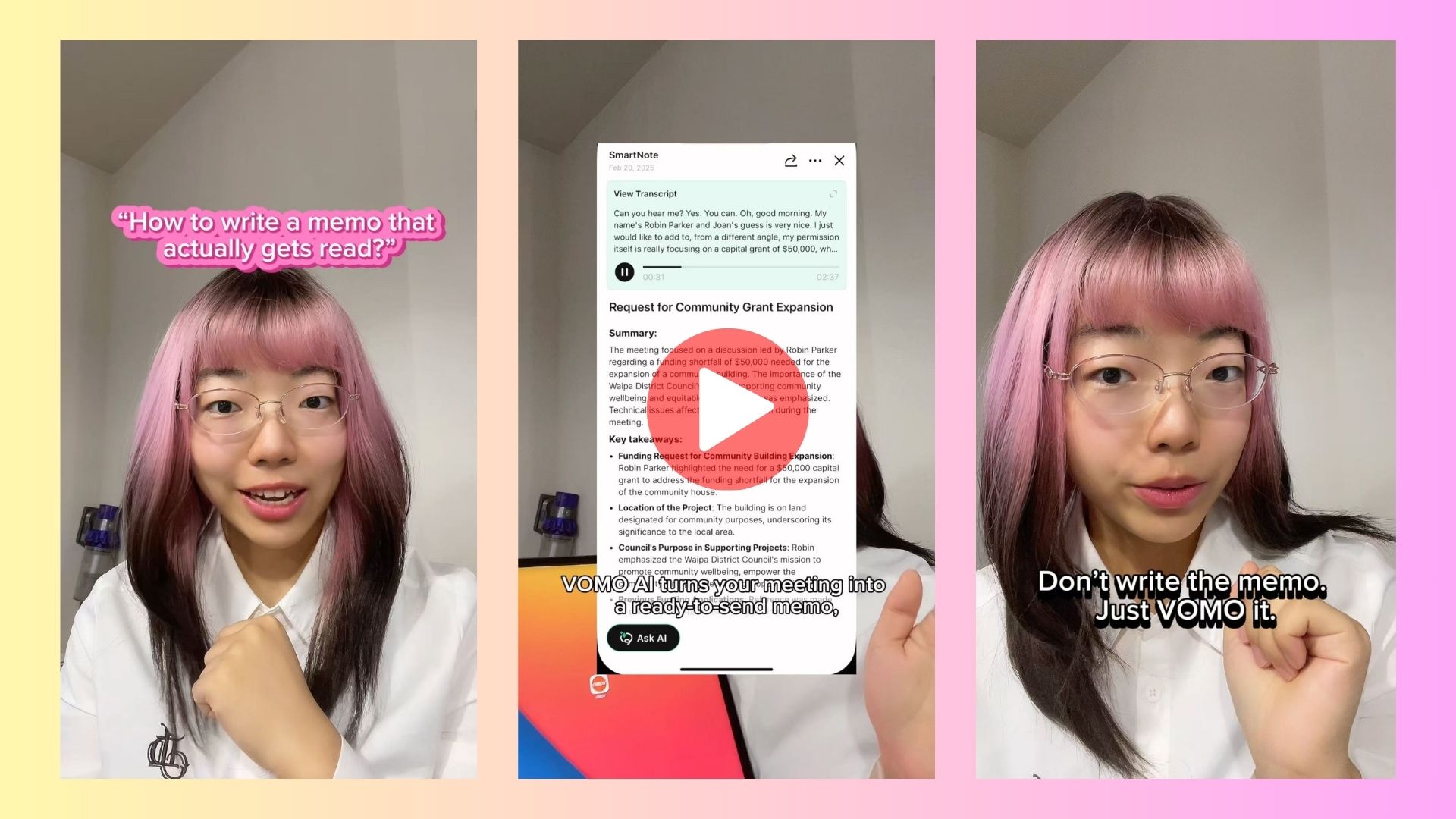Writing a clear, concise, and actionable memo is a critical skill in any workplace—but for many, the hardest part is simply getting started. Whether you need to summarize a meeting, communicate a decision, or request follow-up actions, a well-crafted memo can cut through noise and keep everyone aligned.
But here’s the thing: you don’t have to start from scratch.
Turn Conversations Into Polished Memos with VOMO AI
Before we dive into structure and formatting, here’s a smarter way to create memos—without staring at a blank screen.
🎥 Watch how it works:
VOMO AI transforms your meeting audio into a clear, structured memo in seconds. It automatically captures:
• Key discussion points
• Decisions made
• Action items with assignees and deadlines
You can even prompt VOMO to generate the memo in a formal tone, ready to share with your team or leadership. No more rewriting your notes or guessing what matters most—VOMO does the heavy lifting, so you can focus on moving work forward.
What Is a Memo, and When Should You Use It?
A memo (short for “memorandum”) is an internal communication document used to:
• Inform colleagues about updates or changes
• Request input or action
• Summarize meeting outcomes
• Document decisions for future reference
Unlike casual messages or long reports, memos are short, focused, and easy to digest—ideal for busy teams and fast-moving projects.
Key Components of an Effective Memo
Here’s a standard structure that works for most professional memos:
Header
• To: Name(s) and title(s) of the recipients
• From: Your name and title
• Date: Full date
• Subject: A clear, concise topic line
Opening
• State the purpose of the memo
• Provide any necessary context
Body
• Break down the main points or updates
• Use bullet points or short sections for clarity
• Include any data or examples that support your message
Closing
• Outline next steps or requested actions
• Add deadlines if applicable
• Include your contact info for follow-up
Best Practices for Writing Memos
• Be direct: Say what you need to say up front
• Keep it brief: Stick to what’s relevant
• Use plain language: Avoid jargon unless your audience expects it
• Format for clarity: Use spacing, bullets, and headings to help your reader scan quickly
Using VOMO AI to Draft Memos After Meetings
If your memo is based on a team meeting, one-on-one, or voice recording, VOMO AI can do more than transcribe—it turns your spoken conversations into clean, structured summaries with memo-ready formatting.
You can even export your transcript into an editable format, pull out the action items, or ask AI to rewrite it in memo form. For recurring meetings, it’s a huge time-saver.
Final Thoughts
Knowing how to write a strong memo is still a valuable workplace skill—but that doesn’t mean you have to write it alone. With tools like VOMO AI, you can transform raw conversations into clear documentation that drives results and keeps teams aligned.
Want to stop scrambling to remember what was said in a meeting or struggling with a blank doc?
Let VOMO draft the memo—so you can hit send with confidence.




